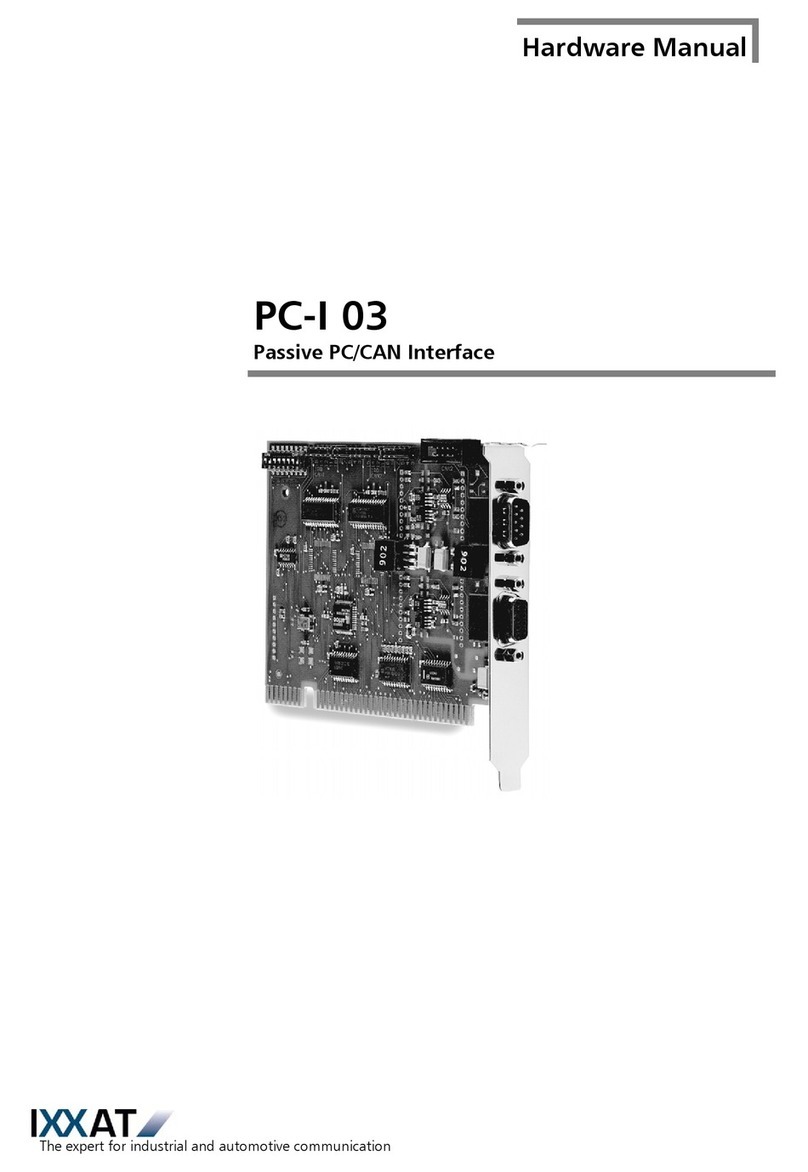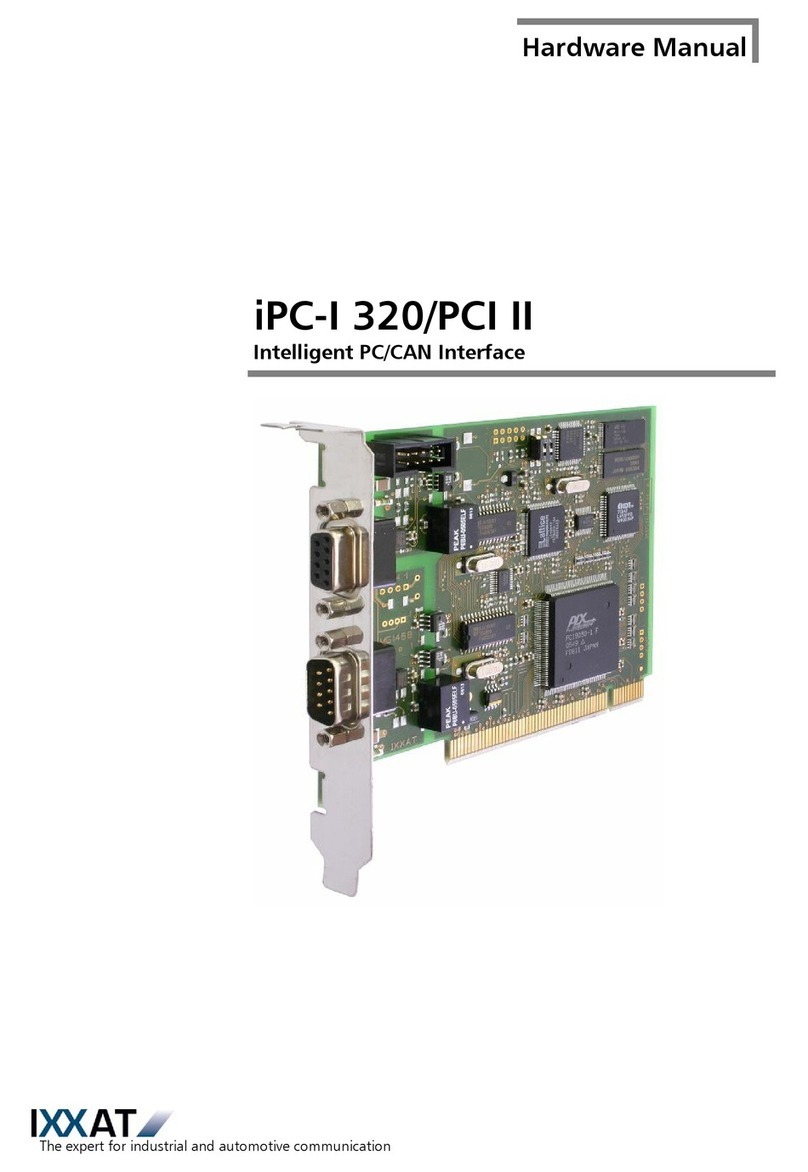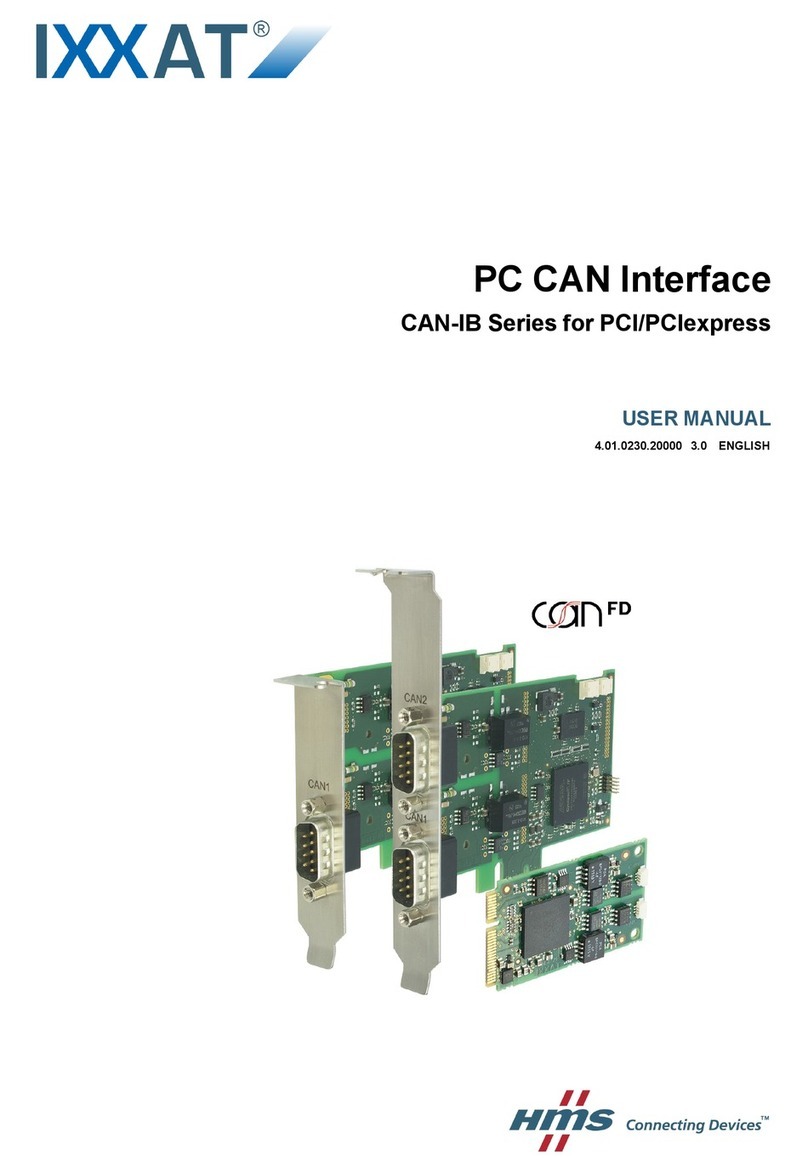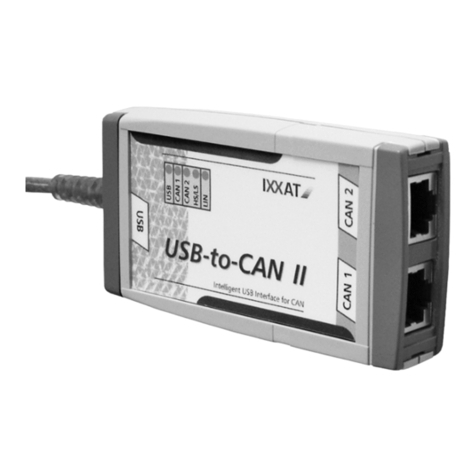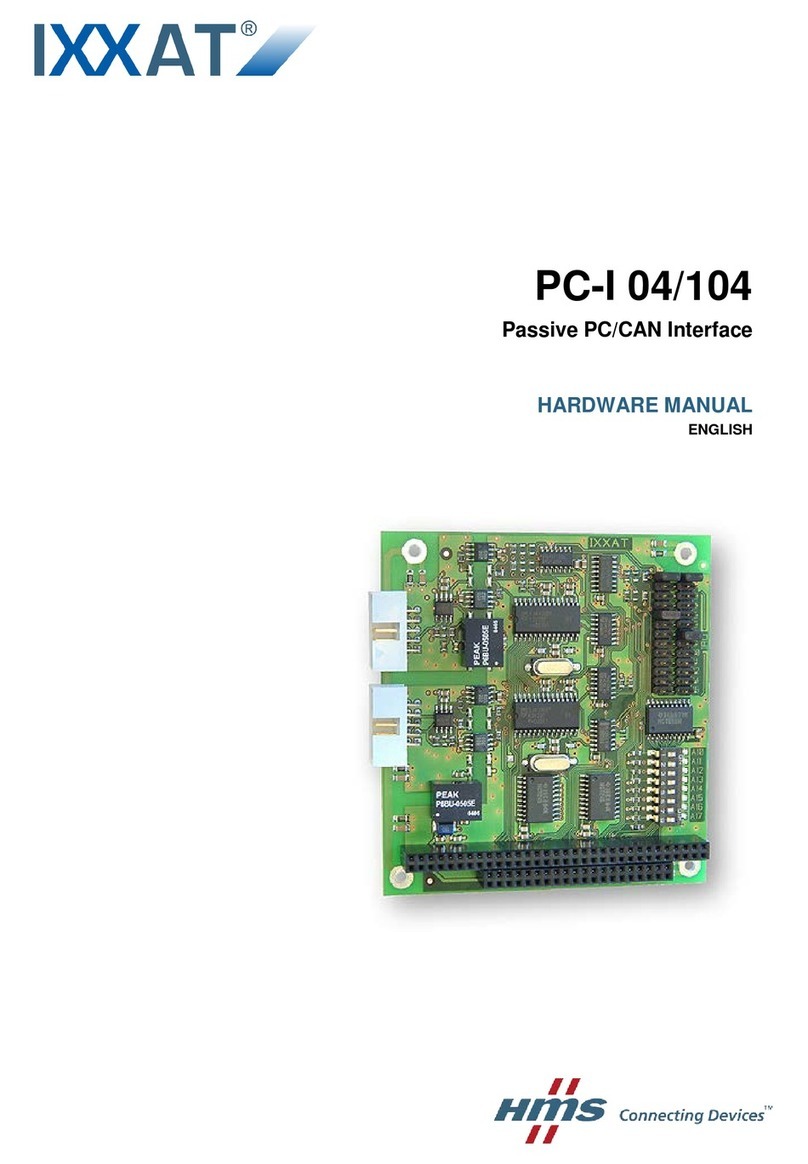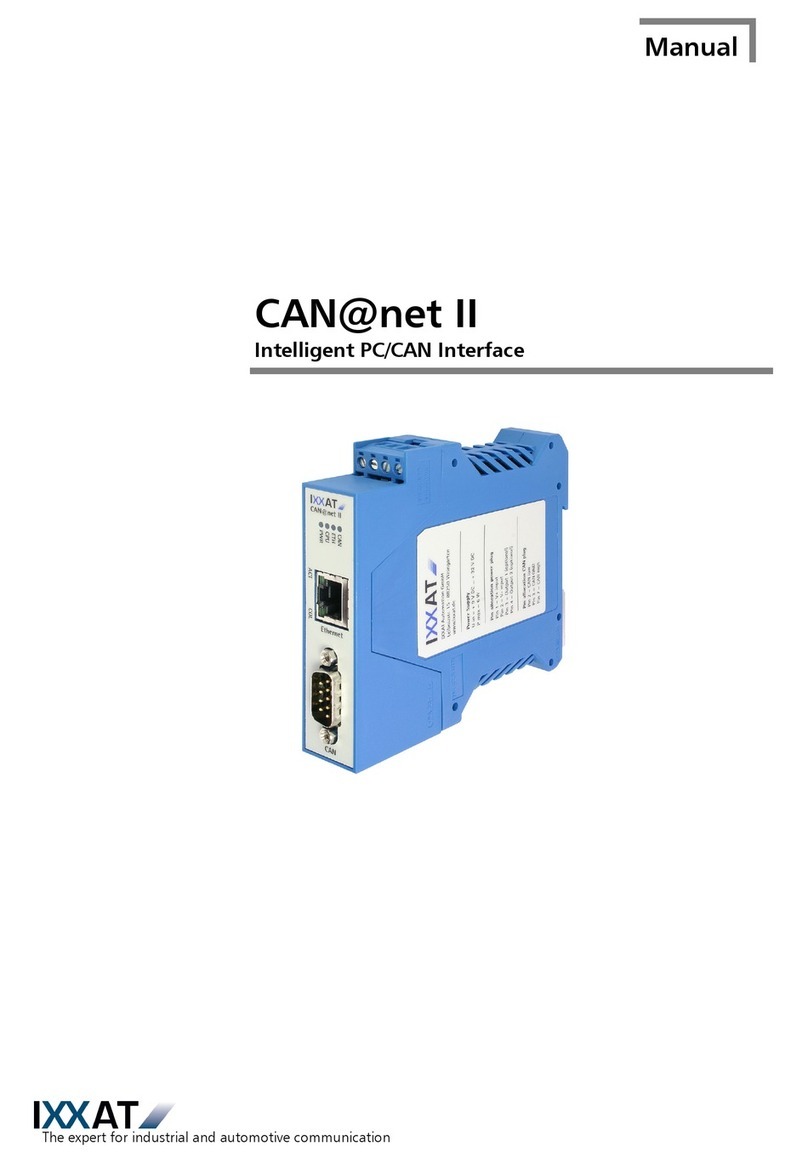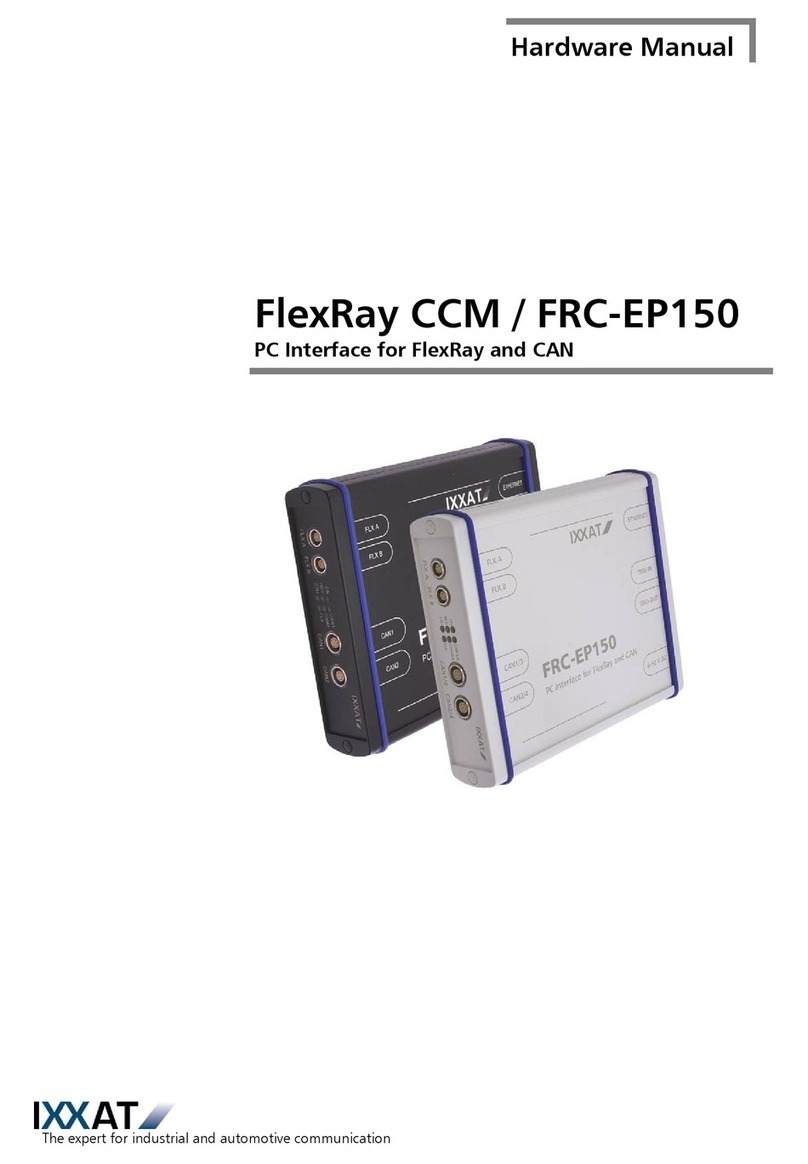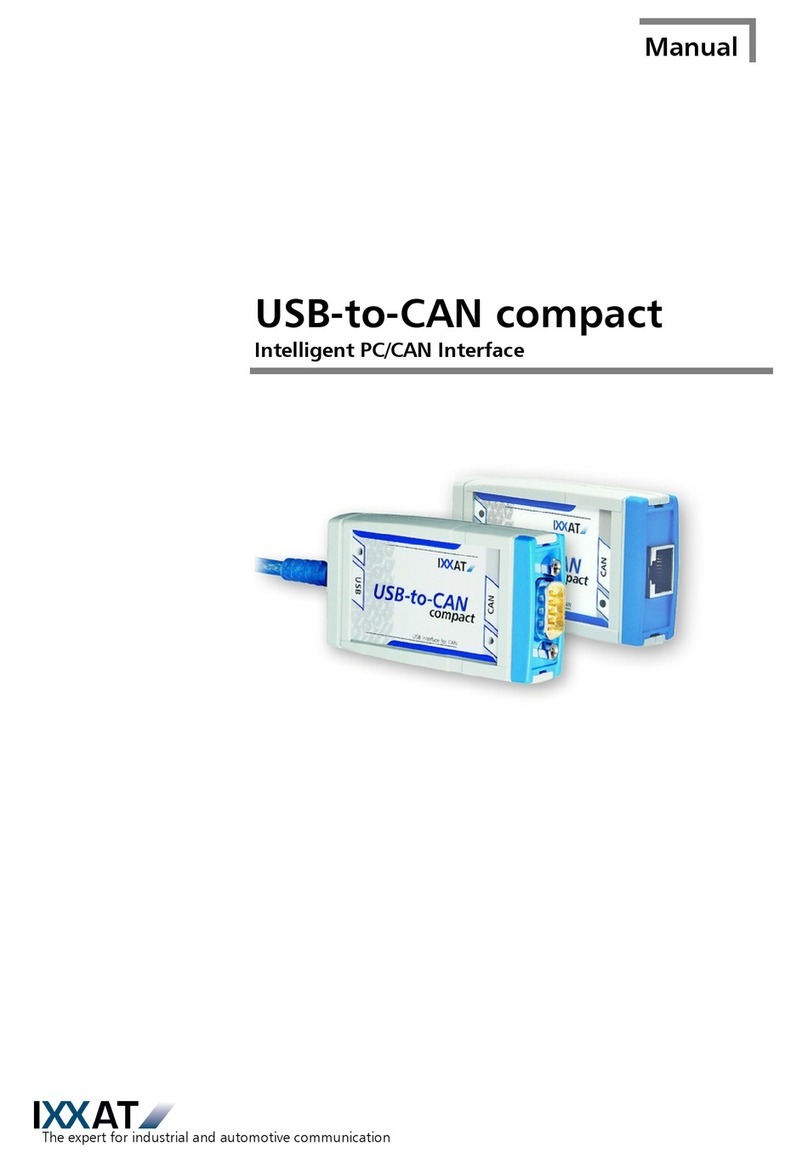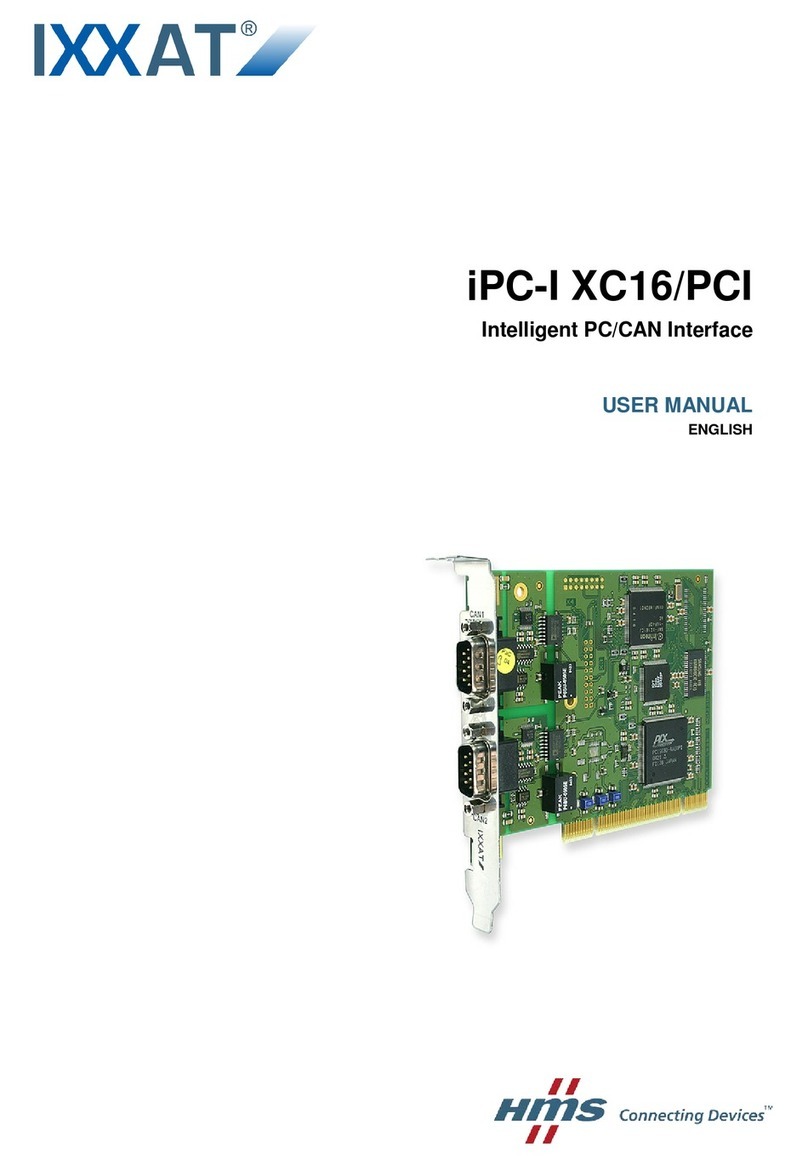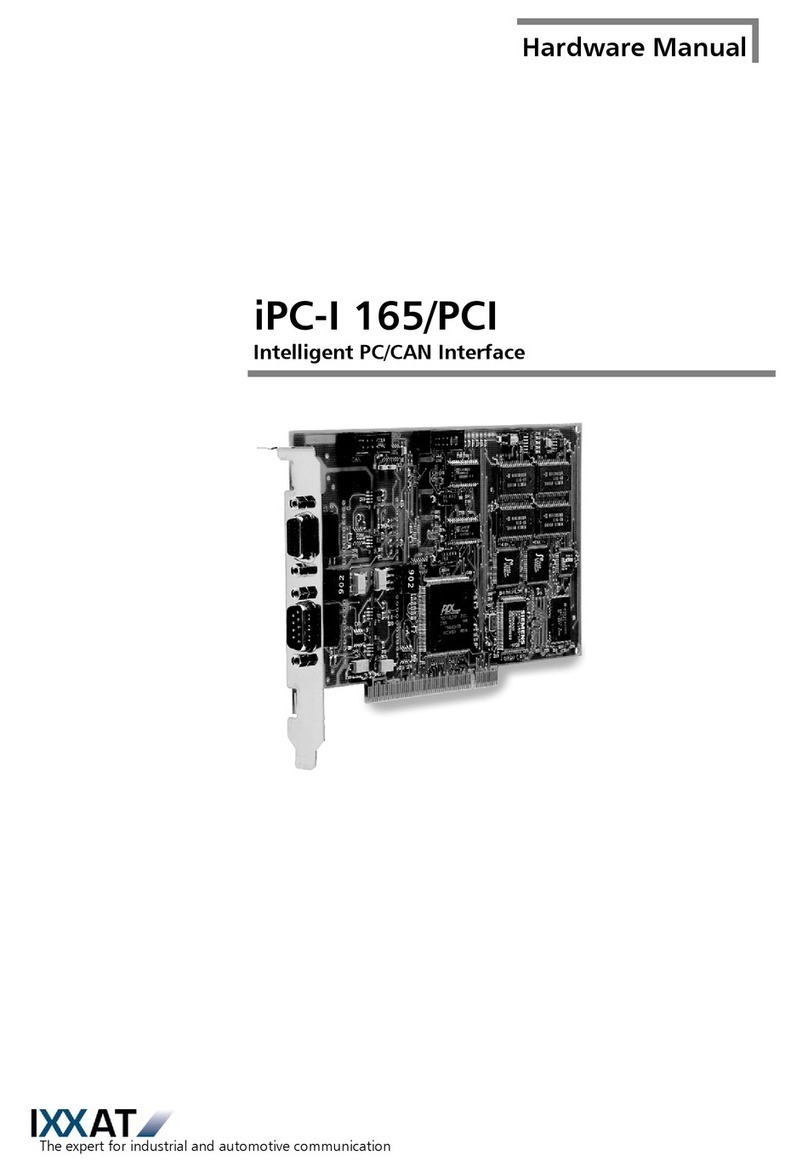
Contents
1Introduction................................................................................5
1.1 Overview ............................................................................. 5
1.2 Features............................................................................... 5
1.3 Block diagram ..................................................................... 6
2Installation ..................................................................................7
2.1 Hardware installation ......................................................... 7
2.2 Software installation .......................................................... 7
3Configuration .............................................................................8
3.1 Settings on the interface .................................................... 8
3.1.1 Setting the base address ...........................................................9
3.1.2 Setting the PC interrupt ............................................................9
3.1.3 16 bit access mode.................................................................10
3.1.4 Zero wait states ......................................................................10
3.1.5 Bootstrap loader .....................................................................11
3.1.6 Reserved switches ...................................................................11
3.1.7 Providing current supply via CAN plug.....................................11
3.1.8 Bus termination resistors .........................................................12
3.1.9 Reset button and LED .............................................................12
3.2 Design of the CAN plugs................................................... 12
3.2.1 CAN bus connector.................................................................12
3.2.2 Serial RS232 interface .............................................................15
Appendix..........................................................................................16
Appendix A .............................................................................. 16
Technical Data .......................................................................... 16
EMC test................................................................................... 16
Appendix B............................................................................... 17
Delivery settings ...................................................................... 17
Appendix C............................................................................... 18
Supply sources for data sheets................................................ 18
Copyright IXXAT Automation GmbH iPC-I 165 - Manual, Version 2.3
3
